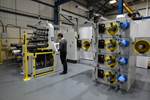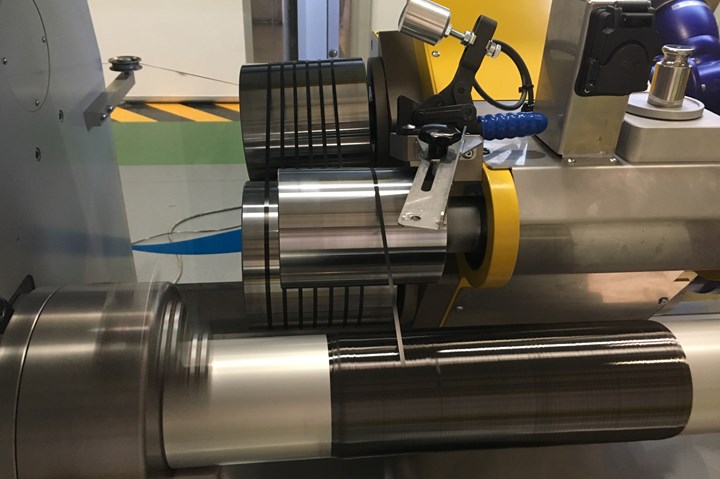Cygnet Texkimp develops high-tension carbon fiber overwrapping solution
Fiber winding technology achieves greater power at higher rotating speeds via high-tension composite wrapping, resulting in enhanced fiber-volume ratio, dimensional stability and lighter parts.
Composites technology company Cygnet Texkimp (Cheshire, U.K.) has developed a high-tension fiber winding solution to create lightweight rotating parts with greater dimensional stability at higher speeds.
The technology, which has evolved through the company’s filament winding capability, has been developed to achieve more power from high-speed rotating machinery by wrapping it in carbon fiber under high tension. This reportedly enables the final part to rotate more quickly without expanding, and means that more power can be achieved from lighter parts.
Applications include high-speed motors for automotive, motorsport and aerospace and fly wheels for energy recovery.
“Our high-tension overwrapping solution has been engineered to manufacture parts where accuracy at high rotational speed is critical,” Tony Price, product director for filament winding and fiber placement at Cygnet Texkimp, explains. “By winding a layer of fiber at high tension around a blank part we can add an extra level of considerable strength, substantially increasing the component’s capacity for speed and endurance without adding significant weight.”
The solution can generate up to 2,000 N of tension and wind consistently in excess of 60 m/min and up to 100 m/min, although this is dependent on the type of fiber used, according to the company. Winding at tension enables manufacturers to pack fibers more tightly and uniformly around a mandrel or part, pulling the filaments closer together within the winding pattern. The effect is that the fiber-volume ratio is increased — in this case, to more than 70% — to create a lighter part that achieves maximum strength with minimum thickness.
“We’re effectively winding close to the breaking point of the fiber, and in doing so we’re able to preload the part to withstand greater stresses in operation,” Price adds.
The technology combines a driven creel system with a sequence of servo-driven rollers to generate and control high levels of force while ensuring minimal damage to the fiber. This is said to be a crucial element of the design and is reminiscent of all Cygnet Texkimp’s fiber handling technologies, since any fiber damage that occurs would reduce the level of tension that could be realized in the part.
An automatic, real-time electronic tension control system is used to monitor and match torque and vary speed, while a purpose-engineered winding head withstands increased force. The carbon tows themselves are an elastic element in the process, adding a further level of complexity for the technology to manage.
Together, Cygnet Texkimp says, these technologies also allow for the desired winding tension to be isolated from the tension needed to unwind the fiber from the package. The package is unwound at a suitable tension to ensure reliability and only after that is tension increased to achieve the desired properties in the wound part.
The solution is capable of processing single- or multitow carbon, glass or ceramic fibers and can accommodate dry winding, wet winding and thermoplastic or thermoset towpregs.
Cygnet Texkimp’s high-tension winding solution is available for trials at the company’s Innovation Centre in Cheshire, U.K.
Related Content
-
Bio-based acrylonitrile for carbon fiber manufacture
The quest for a sustainable source of acrylonitrile for carbon fiber manufacture has made the leap from the lab to the market.
-
Sulapac introduces Sulapac Flow 1.7 to replace PLA, ABS and PP in FDM, FGF
Available as filament and granules for extrusion, new wood composite matches properties yet is compostable, eliminates microplastics and reduces carbon footprint.
-
Infinite Composites: Type V tanks for space, hydrogen, automotive and more
After a decade of proving its linerless, weight-saving composite tanks with NASA and more than 30 aerospace companies, this CryoSphere pioneer is scaling for growth in commercial space and sustainable transportation on Earth.

















